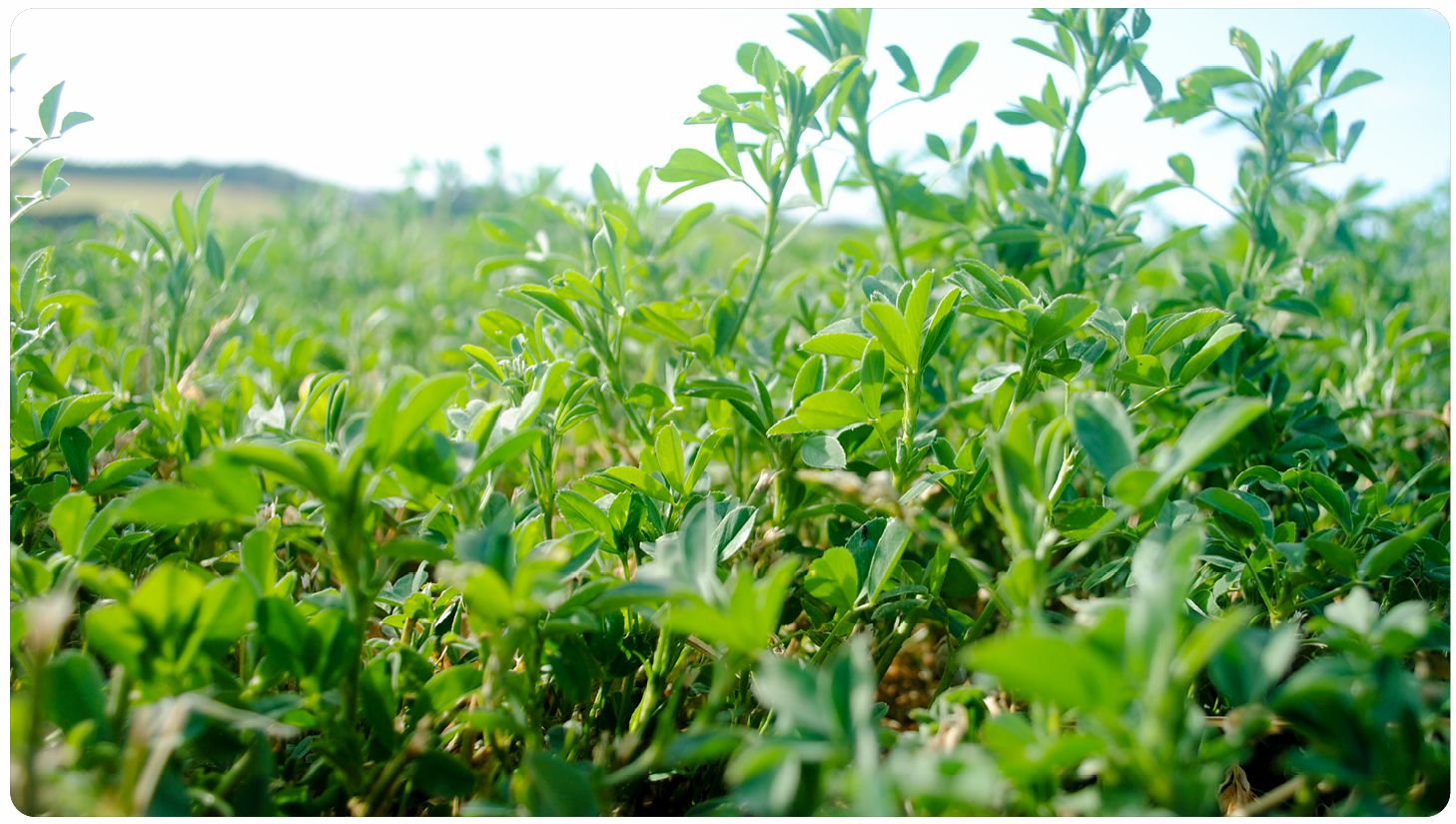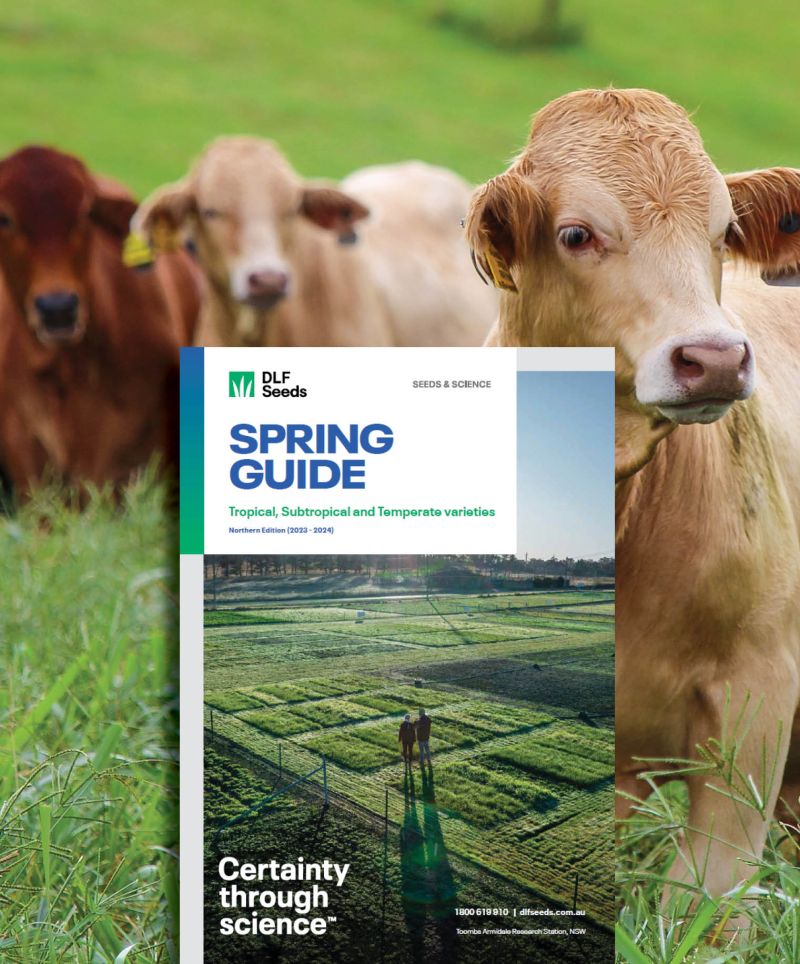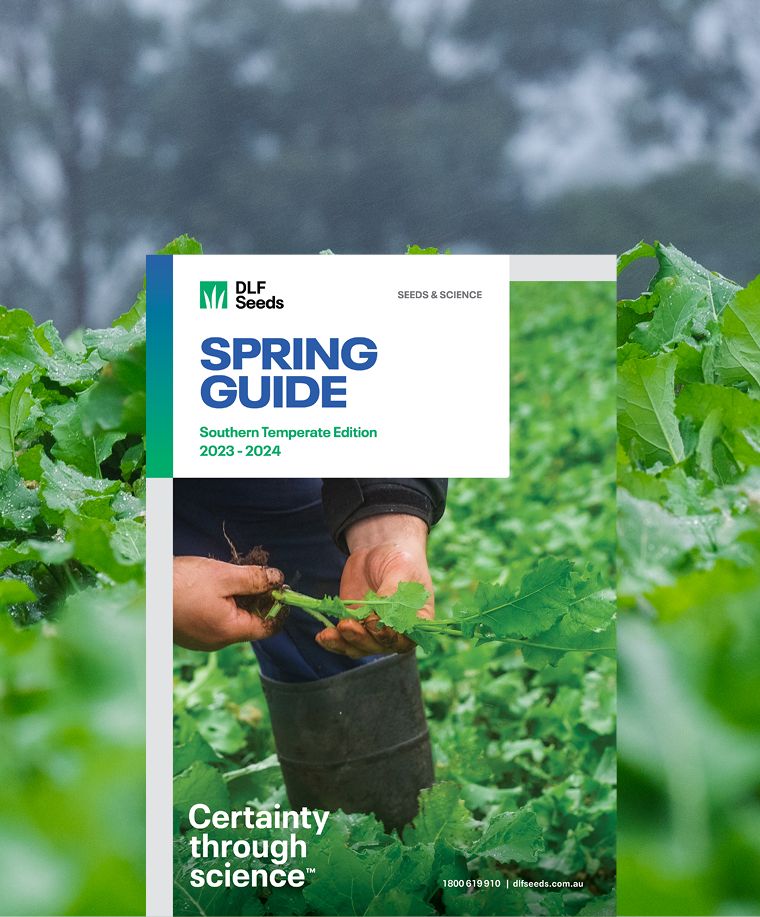Get in Touch
Contact Us
National team

Find Your Local Sales Agronomist
Stamina® GT5 is a high performing lucerne variety that will produce quality hay and grazing opportunities for seven to ten years. It is a true grazing tolerant lucerne that has been trialled over many years under the internationally recognised Standard Test Protocol for grazing tolerant lucernes. It has low, broad crowns and is naturally of high forage quality with fine stems and high leaf to stem ratio. Stamina® GT5 lucerne is the ultimate choice where a stand is required for prolonged periods of set-stocking.
Sowing rate (sole): 5-25kg/ha
Sowing rate (mixed): 2-8kg/ha

Developing grazing tolerant lucernes for Australia’s dryland farms has taken nearly two decades and was a a joint venture project between DLF Seeds (joint ventiure undertaken when DLF Seeds was operating as PGG Wrightson Seeds Australia) and CalWest Seeds in the USA. The products were initially developed in the US after a 6 year screening programme in which elite breeding lines and successful commercial varieties were set stocked by both sheep and beef cattle for a period of 6-7 months per year. Paddocks were maintained at a constant vegetative height of 2-5cm throughout the grazing periods.
Further screening was conducted in Australia by DLF Seeds who evaluated 24 advanced lines in trials that ran for 7 years. Plots were grazed for periods of 10 months at a stocking rate of 40 sheep/ha.
Lucerne varieties bearing the Stamina® designation were selected as ‘best of the best’ in these ultra-rigorous evaluations. Australian farmers are encouraged to ask other seed companies that claim their lucerne varieties are grazing tolerant were they developed. Farmers are advised to plant the best, proven grazing tolerant (GT) varieties from DLF Seeds.
Stamina® GT5 like all other lucerne is small seeded, so therefore it is important to ensure that the sowing of Stamina® GT5 pasture seed is done correctly to ensure the best results for establishment. There are some key fundamentals when sowing lucerne including seedbed preparation, weed control, sowing depth and sowing technique. Following these key steps will help achieve a good establishment of lucerne.
Seedbed preparation
Preparing the seed bed takes into consideration the soil type and cultivation of the soil to ensure the soil is fine. This will aid the soil to seed contact at the time of sowing as well as good supporting moisture infiltration around the seed either after a rainfall event or irrigation. Poor weed control is one of the most common issues that can lead to poor lucerne establishment.
Weed control
Weed control must start the year prior to sowing the lucerne to ensure adequate time and opportunity to control any weeds that are present in the paddock. This should also reduce the need for post emergent herbicides to be used in the young lucerne crop as this can retard growth.
Sowing depth and technique
The sowing depth needs to be managed as lucerne is a small seed and therefore only needs to be sown at no more the 15mm deep. This will enable the lucerne to germinate and the seedling to rise above the soil to begin photosynthesis.
The sowing technique is the method of actually getting the seed into the soil. With so many different options for sowing equipment, it is important to understand the impact this can have when sowing lucerne. Accuracy of sowing rate, equipment condition (shears, knife points or discs) and final compaction (press wheels, harrows or tyre roller) are all important when looking to successfully establish lucerne.
Sowing Rate depending on rainfall/irrigation (Superstrike® treated seed)
For pasture seed sowing rates specific to your farming needs, contact your local DLF Seeds Sales Agronomist here
First grazing/cutting: Allow the lucerne to reach a minimum of 50% flowering (50% of the tallest stems have a flower) prior to the first grazing/cutting, If the stand is weedy at establishment it can be grazed/cut once if it is 15-20 cm tall and then left to flower a minimum of 50%
Spring - Seasonal management (focus on Stock performance)
Summer – Focus on stock performance
Autumn – Focus on lucerne
Winter – Focus on management
Stamina® GT5 is susceptible to a wide range of pests just like any other lucerne variety. Red Legged Earth Mite, Lucerne Flea and some aphids can have devastating effects on lucerne at any stage of its life if not monitored and controlled.
Regular monitoring is very important and if pests are present, speak to your local retail agronomist to find out the best insecticide and use for the pest identified. When sowing lucerne, it is highly recommended to have Stamina® GT5 Superstrike® treated which will give some level of protection for the first 6 weeks after sowing.
Minimum 350mm rainfall per annum unless irrigated
 2024 Product Guide.jpg&Format=jpg&Width=800&Compression=80&Crop=5&DoNotUpscale=True)

